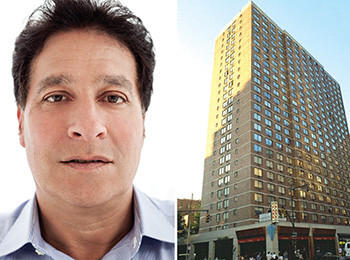With fewer development sites than ever to choose from, especially in Manhattan, developers are returning to a strategy that served them well before the real estate bust: rental-to-condo conversions.
Just as in previous cycles, rising land prices and a shortage of buildable land are key motivators for the increased focus on conversions amid a hot condo market. With condo conversions, which can take less than two years, they’re able to get to market quicker than with ground-up construction, which typically requires three years or more.
In all, 25 rental buildings will relaunch as condos this year, according to Halstead Property Development Marketing. And through the first half of the year, developers filed plans with the Attorney General’s office for eight more rental-to-condo conversions in Manhattan.
Last year, there were 21 conversions in the borough, up from just 10 in 2012.
Well-known converters are, of course, a big part of the trend. This summer, for instance, developer Ben Shaoul paid $270 million to Post Properties for two properties that will be relaunched as condos: Post Luminaria at 385 First Avenue and Post Tuscana at 389 East 89th Street.
In September, meanwhile, Related Companies filed plans with the Attorney General’s office to convert the 339-unit rental building at 200 East 94th Street, known as Carnegie Park. Related also put its rental building at 400 Chambers Street on the market as a potential conversion.
Ziel Feldman’s HFZ Capital currently has 10 conversions in the works, including the Metro, a 264-unit building at 301 West 53rd Street; the Astor, a 212-unit prewar building at 235 West 75th Street, and Lexington Lofts, a 107-unit building at 90 Lexington Avenue — along with the adjacent 177-unit building at 88 Lexington.
“It’s a function of where the opportunity is,” said Feldman, who is working on an equal number of ground-up developments. He said that over the last 18 months, longtime building owners have been cashing out, and there’s been a “constant stream of rental properties that are being offered to the converters of the world.”
Developers are snapping up those buildings, given the lack of other development sites. “There’s less land available [and] most of it is picked through,” said.
In addition to HFZ’s projects, the AG’s office currently has plans for conversions in Manhattan at 360 West 119th Street; 165 East 66th Street; 1810 Third Avenue; 200 East 62nd Street; 270 Riverside Drive; 18 Abingdon Square and 275 West 10th Street. Between 2009 and 2012, a total of 117 rental buildings in Manhattan and Brooklyn were converted to co-op or condo.
The current batch of conversion projects will have bigger units and higher prices than the previous wave, marketers noted. “The level of luxury and price point is unique,” in part to compete with new construction, said Stephen Kliegerman, president of Halstead Property Development Marketing.
Developers also are converting larger buildings than they did before. The number of units being converted this year is nearly double the number in 2013, according to data from Corcoran Sunshine Marketing Group, which tracked a total of 1,051 conversion units that hit the market in 2012 and 2013. The firm projected just over 2,000 in 2014 and 2015.
Justin D’Adamo, a managing director at Corcoran Sunshine, said developers are looking to tap into the strong market, and they want to strike while the iron is hot. “You want to get into the market when the market is strong. You can do that quicker with a conversion,” he said.
Another advantage for developers, he said, is the ability to bring new inventory to established neighborhoods which have little, if any, buildable land, like Battery Park City and the Upper East Side. “If a developer has a portfolio of rental buildings, they can convert without having to pay for the land,” he said. For example, Corcoran Sunshine is marketing River & Warren at 212 Warren Street in Battery Park City, where Centurion Partners is converting existing studio, one- and two-bedroom rentals into condos with two, three-, four- and five-bedroom units. “The only way to bring new inventory to Battery Park City is to convert a rental building,” D’Adamo said.
Rental-to-condo projects also provide a way for developers to compete with ultra-luxury new developments — another byproduct of high land prices, said Danny Fishman, managing partner of Gaia Real Estate, which is converting 144 rental units in the Corinthian in Murray Hill into condos. “Land prices jumped so much, it basically means no one can build to compete with the middle market,” he said. “That pushes new development to [the] high end, so conversions are competing on a step below.”
“It’s a price range that’s coming below the new development [prices], but you still get a luxury building with all the amenities,” Fishman said. “Even if you have a lot of money, it doesn’t mean you need to spend ridiculous prices for a unit. If someone wants it for an investment, he needs a little bit of a return.”
Gaia purchased the rentals from former Gov. Eliot Spitzer’s family company for $147 million. It is converting to condos that will be priced around $1.5 million for a one-bedroom, $2 million for a two-bedroom and $2.5 million for a three-bedroom.
The relative speed to market also makes conversions less risky than a ground-up development — something that’s seen as an asset since the market crashed in 2009. “It’s a shorter period from A to Z,” Fishman said. “Let’s say the market changes. In development, you have to continue building it. In conversions, you can always say, ‘OK, I’m taking the inventory not sold and I’m renting it,’ so at least you have cash flow.”
